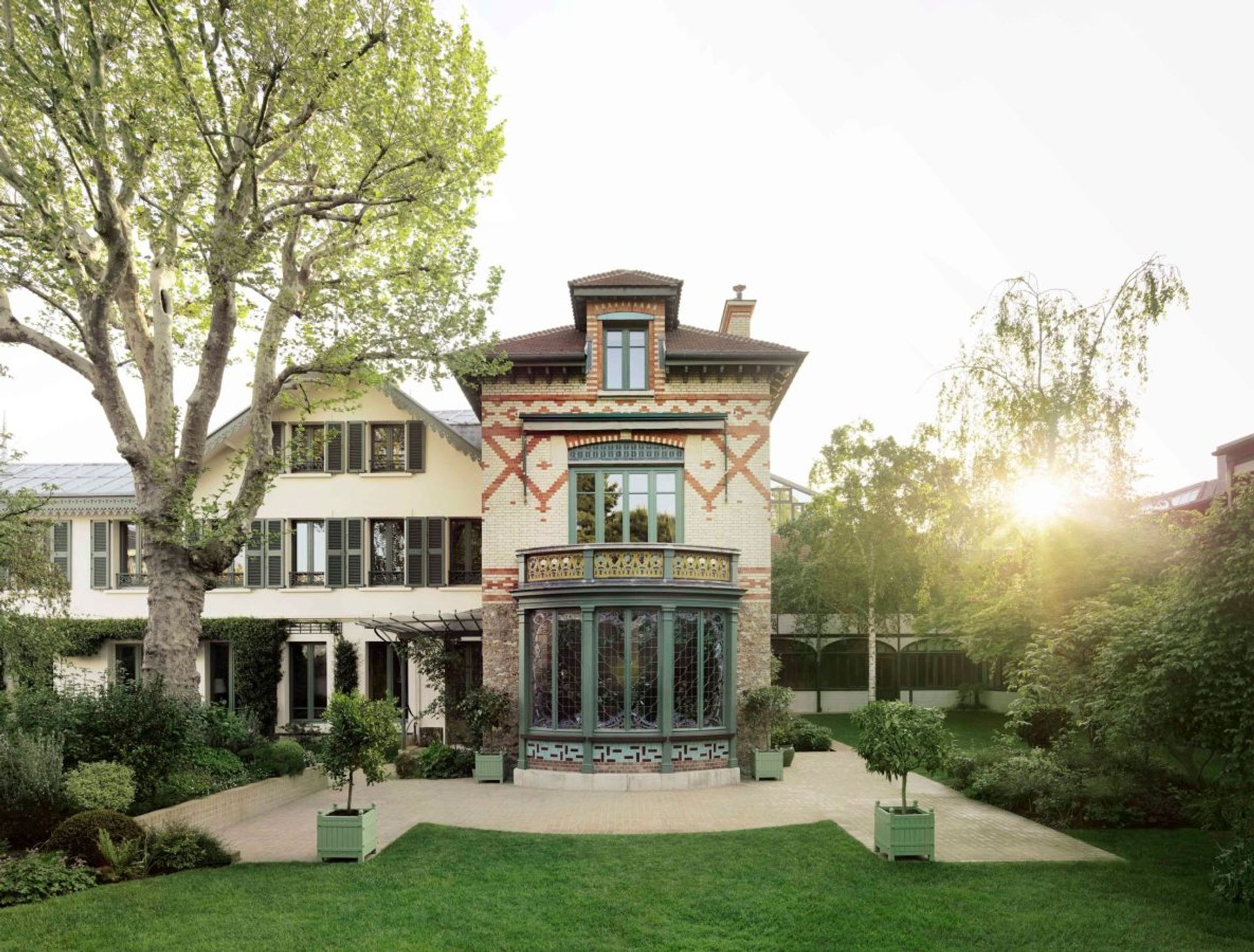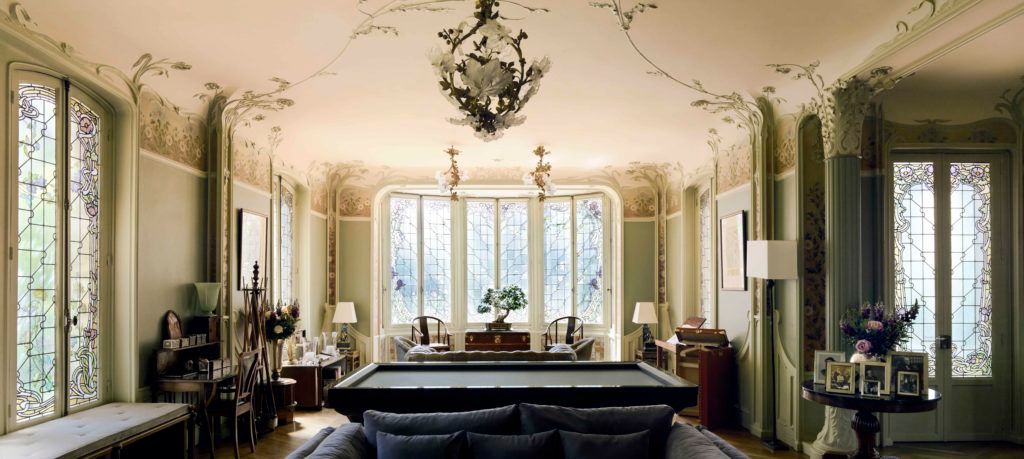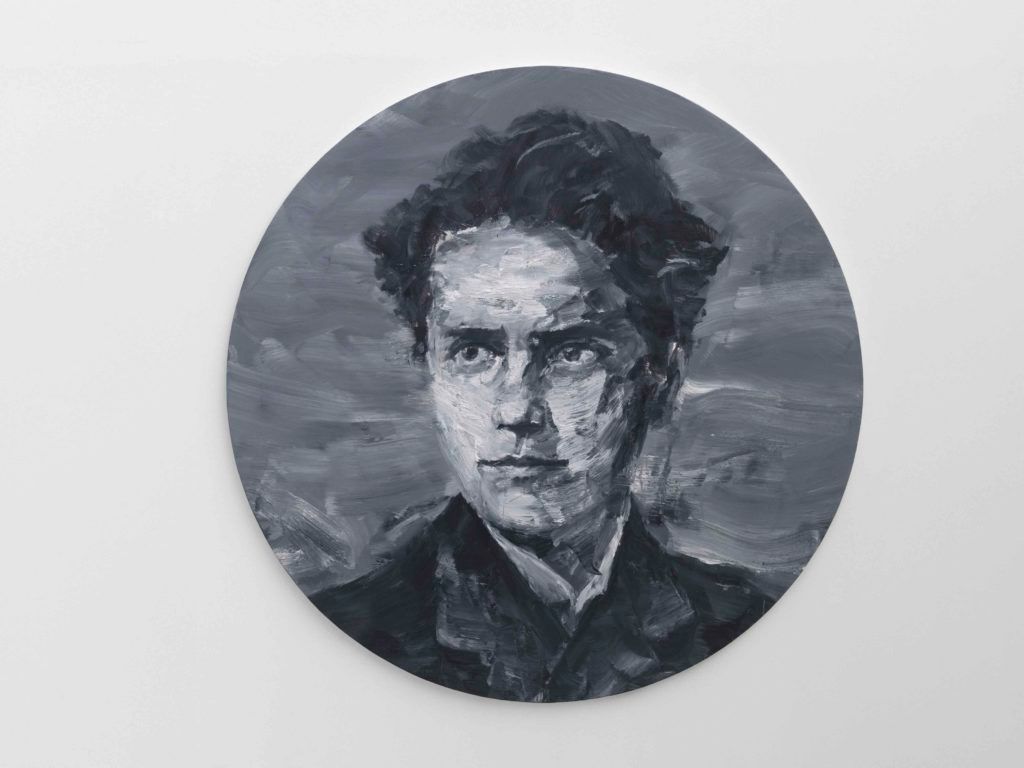The house in the suburb of Asnières-sur-Seine becomes a historical museum of traditional craftsmanship built by its owner, Louis Vuitton.


The 6th owner (Benoit – Louis Vuitton) is currently the Director of an Art, Culture and Heritage company in France. Before being remodeled in 1900, the house had a fairly simple interior, often displaying chests of trinkets that Louis Vuitton’s grandson Gaston collected. They are decorated with motifs such as lovers, symbolizing love and the richness of family life.
Gaston is a collector. Thanks to him, we began to collect archives, with hundreds of thousands of documents and objects not only from Louis Vuitton.”
The house is also decorated in the Art Nouveau style , with ceiling moldings, stained-glass windows, and decorative green ceramic fireplace. Floral motifs, a bronze bust by Louis Vuitton and a striped canvas chest – one of Louis Vuitton’s earlier chests – serve as a coffee table.

Benoit-Louis said, after the Asnières garment factory was formed due to the need to expand the space to produce chests, Louis Vuitton built the house in 1878.
The Louis Vuitton founder realized that his rapidly growing business needed a new relationship. He chose to open his workshop in Asnières, at that time a village northwest of Paris.
Like all other decisions in Louis Vuitton’s life, this was a smart, conscious and bold move.

A canvas painting of a young Louis Vuitton by Yan Pei-Ming (2015), inspired by a portrait of Reutlinger (1892)
Asnières is located on the banks of the Seine, allowing for easy transportation of raw materials including poplar wood needed for the already famous Vuitton trunks. A more modern means of transport was also available: one of the first railway lines in France passed through Asnières, leading to Gare Saint-Lazare, near the first chest-maker’s shop in Paris.
Built in the futuristic style of the Eiffel Tower at the time, the bright, airy tailors were a radical change from the dark workshops of the capital. Asnières quickly became the center of the Louis Vuitton savoir-faire , crafting chests, luggage, and special orders to ship around the world. The new building is also home to the Vuitton family, who originally lived on the top floor of the workshop, keeping daily operations as close as possible. Over time, as orders came in, the workshop continued to expand, taking on its current form in the late 19th century , when it was renovated by artisans from the Nancy School.
Benoit-Louis has fond memories of growing up in Asnières. “It was great to grow up in a place like that. My brother and I spent a lot of time playing in the garden. We also organize summer BBQs and Christmas parties with all employees.”
Although the family had moved out of the house in 1964, the tailor continued to be in business, specializing in hard luggage and perhaps most importantly, housing the brand’s vast archives.

Benoit-Louis
The Asnières studio is still responsible for crafting the most distinctive pieces of the fashion house, including hard-sided chests, rare leather items. With its special orders, Louis Vuitton fulfills the most extravagant requests and imagines the most ingenious designs, from explorer Pierre Savorgnan de Brazza’s bed chest to an iPad chest for Karl Lagerfeld.
A large number of treasures are still carefully kept in Asnières, where 23,000 objects and 165,000 documents are stored, including 110,000 customer records.
Based on these archives, curator Judith Clark created La Galerie, a space devoted to the history of Louis Vuitton, located right in the Asnières workshop and open to the public. Driven to discovery and discovery, La Galerie brings dialogue between the artists, artisans and customers at the heart of Louis Vuitton through letters and sketches, personal belongings, items history and artwork inspired by the house.